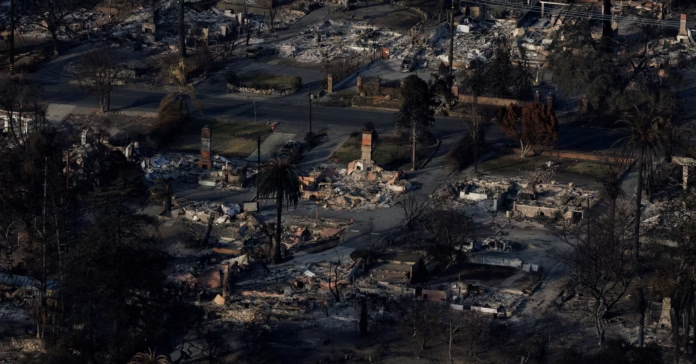Los Angeles is having a tough time recovering from the devastating Eaton Fire in January. The fire burned down thousands of houses in Altadena, a region that was not before thought to be at high risk. While the city recovers, a major concern has arisen—numerous homeowners are not mandated to utilize fire-resistant materials, leaving them vulnerable to future wildfire catastrophes. With global warming increasing wildfires in frequency and intensity, specialists emphasize the need to rebuild with wildfire resistance in consideration.
The Aftermath of the Eaton Fire
Eaton Fire was the most devastating recent wildfire in Los Angeles. The fire raged through Altadena, destroying previously assumed low-risk homes. In the aftermath, families are not only left reeling from rebuilding costs but also with the trauma of staying within a fire-sensitive zone. Whether to remain within the fire-infested zone for many is now not only the question of how to build again but also that.
Patrick and Ruth Fong, whose house burned in the fire, also thought about leaving. This was the second wildfire to ravage the property—the Kinneloa Fire in 1993 destroyed it as well. “We had in our heads, we have to build it and sell it because what if it happens again?” Patrick explained. But their strong connection to the community kept them there and made them decide to rebuild.
New Fire Zones and More Stringent Building Codes
After the Eaton Fire, California fire authorities revised wildfire hazard maps, placing an additional 1.4 million acres statewide within high-risk areas. This increase will force over 500 homes in Altadena to abide by California’s wildfire-resistant building regulations. However, thousands of additional homes in the burned district remain beyond the new fire districts and will not be subject to these tightened standards.
These new maps represent an unusual step in disaster recovery. Normally, following a wildfire, government agencies loosen building codes to accelerate rebuilding. Los Angeles County is doing the opposite, however, tightening regulations to make sure that it is more resilient in the future. Homeowners who secure building permits on or after July 22 will be required to comply with the new wildfire safety measures, including fire-resistant roofs, siding, and attic vents that keep embers out of homes.
Also read: Americans React To Stricter Travel Guidelines: “Take Your Tourism Somewhere Else,” Says A Citizen
The Cost of Fire-Resistant Reconstruction
Although fire-resistant houses increase survival chances during a wildfire, there are also cost concerns. Some homeowners count on insurance monies to rebuild but not all policies cover the expenses of complying with new building codes.
To help with the financial burden, Los Angeles County officials are exploring funding options, including grants to assist homeowners in making their properties more fire-resistant. “We’re looking at grant opportunities to help people harden their homes against future fires,” said county supervisor Kathryn Barger.
The Need for Long-Term Wildfire Planning
The Eaton Fire has brought into focus weaknesses in California’s wildfire risk assessment. The state’s wildfire hazard maps concentrate on wildland but do not entirely consider the risk of fire jumping from house to house. This shortcoming leaves many homes in Los Angeles still at risk.
Experts argue that rebuilding efforts must prioritize wildfire resilience to prevent repeating past mistakes. Research shows that houses built to California’s wildfire codes are 40% more likely to survive a fire. A FEMA study also found that adopting these codes nationwide could save $24 billion in damages over 75 years.
Building a More Fire-Resilient Los Angeles
The catastrophic 2024 wildfires have compelled Los Angeles to reconsider its strategy towards fire safety. Although a few homeowners are unwilling to spend money on fire-proof materials, the fact of the matter is that wildfires are becoming more severe with climate change.
Altadena leaders are also planning other safety steps, including burying power lines to minimize the threat of fires. Most previous wildfires, like the Eaton Fire, were caused by electrical lines arcing due to high winds.
“We have a chance to demonstrate to people how to develop a community that can coexist in peace and harmony with the natural disasters surrounding them,” said Nic Arnzen, an Altadena Town Council member.
Conclusion
Los Angeles has historically led the way with wildfire planning, but the last few fires uncovered vulnerabilities that are now urgent needs. The city has an opportunity to not only rebuild houses, but to forge a stronger future.








